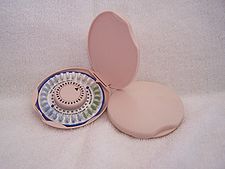Contraception
Click these Links:
Barrier Methods:
Physical methods may work in a variety of ways, among them: physically preventing sperm from entering the female reproductive tract; hormonally preventing ovulation from occurring; making the woman's reproductive tract inhospitable to sperm; or surgically altering the male or female reproductive tract to induce sterility. Some methods use more than one mechanism. Physical methods vary in simplicity, convenience and efficacy.
Barrier methods place a physical impediment to the movement of sperm into the female reproductive tract

Condom
The most popular barrier method is the male condom, a latex or polyurethane sheath placed over the penis. The condom is also available in a female version, which is made of polyurethane. The female condom has a flexible ring at each end — one secures behind the pubic bone to hold the condom in place, while the other ring stays outside the vagina.
Cervical barriers are devices that are contained completely within the vagina. The diaphragm fits into place behind the woman's pubic bone and has a firm but flexible ring, which helps it press against the vaginal walls.
Spermicide may be placed in the vagina before intercourse and creates a chemical barrier. Spermicide may be used alone, or in combination with a physical barrier.
Hormonal methods

There are variety of delivery methods for hormonal contraception. Snthetic estrogens and progestins (synthetic progeestin) combinations commonly used
- include the combined oral contraceptive pill ("The Pill") - there are numerous brands and concentrations of the estrogen/progestins. The general trend is for much lower doses to reduce and lower metabolikc side effects. Dr. Purdy uses for example Loestrin 24 FE, Ortho Tricyclen Lo, Ortho Tricyclen, Yaz,, Seaonnique, Lybrel, and ( generic) etc!
- the Patch - Ortho Evra
- the contraceptive vaginal ring - Nuvaring
Other methods contain only a progestin.
- These include the progesterone only pill (minipill'). Dr. Purdy uses Micronor or generics of progetin only pill - eg Erin, Camila etc. The progestin-only pill must be taken at more precisely remembered times each day than combined pills.
- the injectables Depo Provera (a depot formulation of medroxyprogesterone acetate given as an intramuscular injection every three months)
- contraceptive implant. -contraceptive implant. -Implanon was approved for sale in the United States on July 17, 2006. This method is called subdermal contraception. Implanon has been replaced by Nexplanon as the next generation subdermal implant. Dr.Purdy does use this 3 year method of contraception.
Emergency contraception
Some combined pills and progestin only pillss may be taken in high doses to prevent pregnancy after a birth control failure (such as a condom breaking) or after unprotected sex. Hormonal emergency contraception is also known as the "morning after pill," although it is licensed for use up to three days after intercourse.
Copper intrauterine devices may also be used as emergency contraception. For this use, they must be inserted within five days of the birth control failure or unprotected intercourse.
Emergency contraception appears to work by suppressing ovulation. However, because it might prevent a fertilized egg from implanting (Contragestation), some people consider it a form of abortion.
Intrauterine methods

These are contraceptive devices which are placed inside the uterus. These devices use contragestion. This means that the pregnancy is not implanted in the uterus. The early pregnancy aborts. They are usually shaped like a "T" — the arms of the T hold the device in place. There are two main types of intrauterine contraceptives: those that contain copper (which has a spermicidal effect), and those that release a progestogen- for example Mirena. Dr. Purdy does not use this method since the IUD acts like a miniabortion process after the pregnancy is conceived (Contragestation). Dr. Purdy does not use Mirena (another IUD device with imbeded' slow release progestin) due to its contragestation effect. Dr. Purdy abides by the Hipocratic oath that most doctors pledged upon accepting at graduation their MD degree.
Sterilization
Surgical sterilization is available in the form of tubal ligation for women (and vasectomy for men). Sterilization should be considered permanent. In women, the process may be referred to as "tying the tubes," but the Fallopian tubes may be tied, cut, clamped, or blocked. This serves to prevent sperm from joining the unfertilized egg. The non-surgical sterilization procedure, Essure, is an example of a procedure that blocks the tubes, wherein micro-inserts are placed into the fallopian tubes by a catheter passed from the vagina through the cervix and uterus.
The approach surgically is either a mini laparotmy incision or most commonly a laparoscopic incision (bandaid surger). Dr. Purdy uses the outpatient laparoscopic clip (Filschie clip) method of tubal sterilizaton as an outpatient surgery. This is a minimally invasive surgery (MIS). A tubal sterilization failure is 1 out of a 1000 - 3000 procedures as an invetval procedure. The failure rate is 1 out of 300 procedures is the tubal sterilization is performed with a C-section (national data).
Although tubal ligation should be considered a permanent procedure, it is possible to attempt a tubal ligation reversal to reconnect the Fallopian tubes. The rate of success depends on the type of tubal ligation procedure that was originally performed and damage done to the tubes as well as the woman's age. Dr. Purdy's tubal reversal success is about 85- m90 percent and successfully pregnancy is 50 - 70 percent. Tubal reversal ( tubal reanastamosis has an increased risk of ectopic pregnancy.